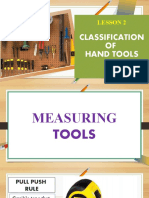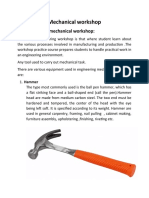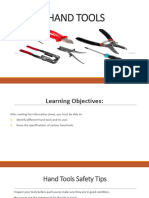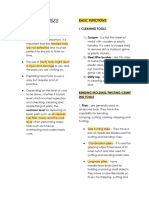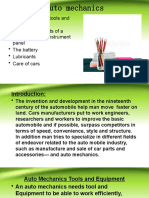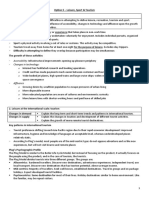0% found this document useful (0 votes)
6 views18 pagesMSP Experiment 1
The document provides an introduction to various hand tools used in construction, detailing their classifications and specific applications. It covers tools such as hammers, screwdrivers, pliers, wrenches, chisels, and saws, emphasizing their proper use, safety, and maintenance. The objective is to familiarize students with these tools and their roles in mechanical tasks.
Uploaded by
Music loversCopyright
© © All Rights Reserved
We take content rights seriously. If you suspect this is your content, claim it here.
Available Formats
Download as PDF, TXT or read online on Scribd
0% found this document useful (0 votes)
6 views18 pagesMSP Experiment 1
The document provides an introduction to various hand tools used in construction, detailing their classifications and specific applications. It covers tools such as hammers, screwdrivers, pliers, wrenches, chisels, and saws, emphasizing their proper use, safety, and maintenance. The objective is to familiarize students with these tools and their roles in mechanical tasks.
Uploaded by
Music loversCopyright
© © All Rights Reserved
We take content rights seriously. If you suspect this is your content, claim it here.
Available Formats
Download as PDF, TXT or read online on Scribd
/ 18

















